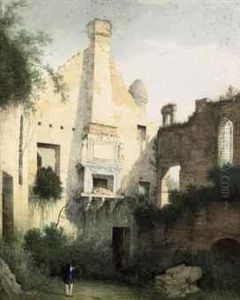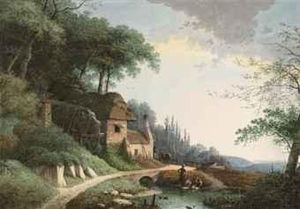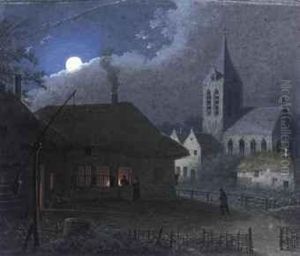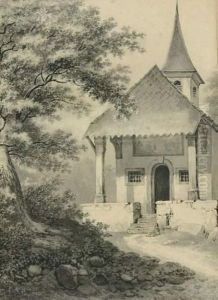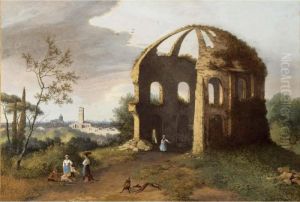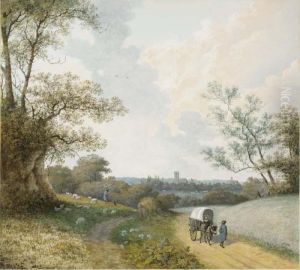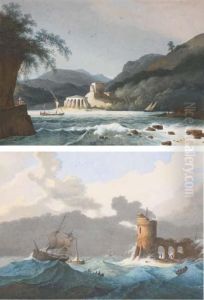Martheus Derk Knip Paintings
Martheus Derk Knip was a Dutch artist born on October 25, 1770, in Tilburg, Netherlands. He was primarily known for his skill in painting landscapes and animals, though he also created beautiful still life paintings and illustrations. Coming from a family with artistic roots, his mother was an artist, and his sister Henriëtte Ronner-Knip also became a well-known painter.
Knip began his artistic education under his mother's tutelage before moving on to study formally. He attended the Tekenschool in 's-Hertogenbosch and later studied at the Antwerp Academy in Belgium. His talent was recognized early on, and he won several awards for his work during his time as a student.
Throughout his career, Knip traveled extensively, which influenced the development of his style and subject matter. He spent time in Paris, where he was influenced by the French Romanticism movement, and in Italy, where the picturesque landscapes left a lasting impression on his work. His Italian journeys, in particular, inspired a series of landscape paintings that garnered attention and appreciation from his contemporaries.
Knip's work was characterized by detailed and realistic depictions of nature, with a particular emphasis on light and atmosphere. He was adept at capturing the subtle nuances of the natural world, and his paintings often conveyed a sense of tranquility and harmony.
Despite his success, Knip faced financial difficulties later in life, which were exacerbated by the changing tastes of the art-buying public and the advent of new art movements. Nevertheless, he continued to create art until his death on October 24, 1857, in Berlicum, Netherlands, just one day shy of his 87th birthday.
Today, Martheus Derk Knip's paintings can be found in various Dutch museums, and his work is celebrated for its contribution to the Dutch Romantic tradition in art. His legacy is also carried on through the works of his sister and the generations of artists who have been inspired by his commitment to capturing the beauty of the natural world.



